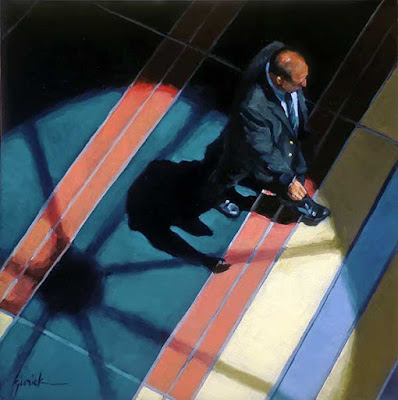5-3/4 x 12"
oil on panel
sold
A long time ago I visited the Smithsonian Museum of American Art, one of my favorite museums, and saw Romaine Brooks' Self-Portrait for the first time. I instantly fell in love with that painting. It was monochromatic, moody, intriguing. It was one of the first prints I ever framed for myself. Still have it.
Romaine Brooks painted the Self-Portrait in 1923. She lived most of her life in Paris and at the age of 36 she exhibited her work in a gallery for the first time, quickly establishing herself as an artist. She was a leading figure in the bohemian, expatriate, counter-culture of Parisian life - sporting her androgynous look and going against all conventional ideas of how a woman should present herself and behave.
Leading up to her more-independent years, Brooks had led a young life filled with turmoil - a daughter of wealthy Americans, parents divorced, father abandoned the family, raised by an abusive, alcoholic mother who gave her to a poor family living in a New York City tenement. That family tracked down her grandfather, who sent Brooks her to boarding school. Understandably, at the age of 19, she left it all behind her and moved to Paris. There, she had a child who she placed in a convent for care, fled to Capri, lived in poverty, had a nervous breakdown, returned to New York to care for her dying mother who left her with a large inheritance, making her and her sister independently wealthy.
The unbelievably fascinating life of Romaine continued for her entire life - love affairs with famous women writers, actresses, political activists, aristocrats - maybe sympathetic to Fascism, maybe not. She was famously non-monogamous, thrived on being with people yet had long bouts of solitude. She was complicated. Yet, because France had decriminalized homosexuality as early as the late 18th century, she was able to live her life as a lesbian out in the open and on her own terms. Brooks lived until the age of 96, buried in Nice, France.
My painting will be included in the upcoming show
The Ladies, opening August 2nd at Robert Lange Studios in Charleston.
Please
click here for a larger view.
















































